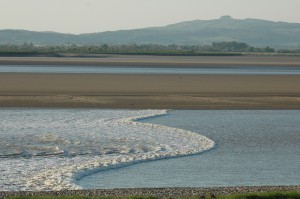WWT reaction to surprise barrage announcement
Following the revelation today that government officials are to look into proposals for a privately funded barrage across the Severn Estuary, the Wildfowl & Wetlands Trust (WWT) has urged the government to take into account the findings of the Severn Tidal Power Feasibility Study.
The £9 million study, concluded three years ago, found a range of genuine barriers to delivering large infrastructure projects in this estuary over and above the question of finance. Potential problems with large barrages include an unsustainable loss of habitat and the greater risk of flooding elsewhere and erosion.
The study also highlighted other promising technologies which had the potential to deliver high energy at a much lower cost to wildlife. Though details of the new proposal from Corlan Hafren have not been shared yet, WWT believes that government should direct its efforts in further investigating new technologies.

Speaking today, WWT Director of Conservation Dr Debbie Pain said:
"The Severn Estuary with its incredibly large tides is absolutely the right place to be looking to generate tidal energy. However, that must not come at the expense of the natural environment.
"Thanks to the feasibility study we now have a wealth of knowledge about just what a concrete barrage from Cardiff to Weston would do to the environment of the Severn Estuary, and to people and businesses who use and value it.
"We haven't seen details of this new proposal from Corlan Hafren so we remain open minded. However, if it is still going to make a vast difference to the tidal range, it is going to change the estuary dramatically. That sort of damage simply cannot be compensated for elsewhere. The government would have to demonstrate that it is adhering in principle and practice to the legally binding EU Habitats and Birds Directives."

